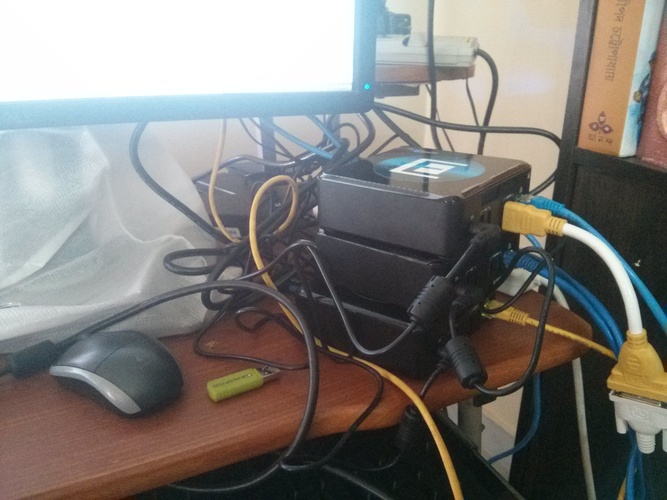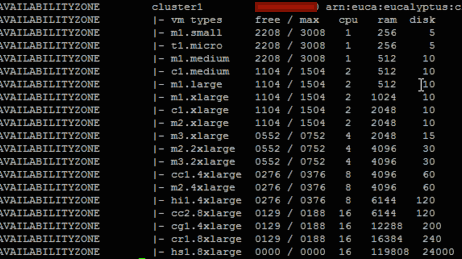Many students already asked me this. They all want to do project work or just want to see what is cloud but not sure how that helps. So this post is for those students who are still wondering if they should install a private cloud or not.
Cloud is still new in the market. You want to have a look or just want to learn the basics. Having a private open source cloud will fit in your budget as you don’t have to use a credit card (which most students do not have anyway). You can install them in your old desktop and keep learning different technologies in this field.
As in the last paragraph we know that with private open source clouds you don’t have to spend money to learn.
After installing a cloud at your house or hostel room you can just use it to learn other latest technologies. You will not be spending time to setup new vms or computers, instances are cheap, after you are done with them or if you mess up stuff, you can just terminate them and start new ones. For example I used my cloud on my desktop to learn Ansible. I was creating couple of CentOS instances and trying out on them. When ever I wanted to test my scripts I just started new instances and run against them.
Almost every major Linux distributions release their own cloud images, which are small in size too. You can just install them in your cloud and try out the distributions. Fedora cloud sig always pushes newer images which you can use. To download them visit this link <http://fedoraproject.org/en/get- fedora#clouds>_.
The easiest option to have a private is Eucalyptus Faststart and the install docs are here.
I am moving the development/testing work inside similar instances I use in Linode. The current dev/testing environment seats on table and looks like this.

Yes I know I have to fix the cables but for now this works great. Adding cloud images of different distributions I test against. In case you want to know what is inside look at the screenshot.

In case you are looking for a cloud which you can deploy in your own infrastructure and manage it easily without needing an army of devels & admins, you should have a look at Eucalyptus, the source is in github.
Here is a screenshot from someone’s cloud, a large cloud actually.

s3cmd is the command line tool to access files in the Amazon S3 object storage. It is written in Python.
Walrus is the object storage of Eucalyptus.
Objects : All files which are stored in the object storage are known as objects.
Key : The filename of an object is known as key.
Bucket : It is the name of the place where people store the files, it behaves like directory with some limitations. Buckets must have unique names.
Install latest version of s3cmd using git in a virtual environment.
$ virtualenv s3
$ source s3/bin/activate
$ git clone https://github.com/eucalyptus/s3cmd
$ cd s3cmd
$ python setup.py install
The default configuration filename is .s3cfg
Following is a minimal example.
[default]
access_key = MRKEEDJHJKQRLMV3K2FB94
secret_key = 3Jy1VKDZmVpwdsffdf8d2PsmfhVojfAW8RmFO2FD
host_base = 192.168.1.100:8773
host_bucket = 192.168.1.100:8773
service_path = /services/Walrus
access_key and secret_key are from your eucarc file. You also know the ip of the host.
$ s3cmd ls
2013-12-24 16:27 s3://foolto
2013-10-19 13:56 s3://mybucket
2013-10-24 15:35 s3://official
2013-12-03 14:47 s3://snapset-5599d8c1-296f-480f-b2be-1e2b03933e42
$ s3cmd ls s3://foolto
DIR s3://foolto//t2/
2013-12-24 16:51 52680 s3://foolto/lscpu
$ s3cmd mb s3://testbucket
Bucket 's3://testbucket/' created
$ s3cmd put .s3cfg s3://testbucket/sample-configuration.txt
.s3cfg -> s3://testbucket/sample-configuration.txt [1 of 1]
213 of 213 100% in 0s 668.66 B/s done
In this example we uploaded the configuration file to the testbucket. We can list the bucket content once more.
$ s3cmd ls s3://testbucket/
2013-12-26 04:57 213 s3://testbucket/sample-configuration.txt
$ s3cmd get s3://testbucket/sample-configuration.txt
s3://testbucket/sample-configuration.txt -> ./sample-configuration.txt [1 of 1]
213 of 213 100% in 0s 1315.45 B/s done
$ s3cmd del s3://testbucket/sample-configuration.txt
File s3://testbucket/sample-configuration.txt deleted
You can learn more about s3cmd from here. If you want to learn about more configuration values available, you can check this link.
Yesterday we had a session on Eucalyptus in my house. Total 7 people attended the session including me. We started with an all-in-one cloud installation on the Inter NUC(s). After the cloud is up and running, I installed Fedora 20 cloud image on it.
During the installation we had some nice discussions around different technology choices and features of Eucalyptus. Few people also noted the key differences and similarities between OpenStack and Eucalyptus.
Today evening we had a session on “Open Cloud” using Eucalyptus Community Cloud on #dgplug channel on freenode. 15 people attended the session. We went through the different parts of the user console. People created security groups and key pairs. Everyone started their own instances (with little hiccups) and sshed into them. The UI is simple enough for the students to get the idea.
In future I will be doing more sessions on IRC, starting from installing your own private cloud to learning different technology using cloud. I will also put the notes on my blog. If you think I should cover any particular piece
We have another great release, already 10 years over. I still remember the day I read about Fedora for the first time, I was still running RHL7.3, never upgraded from there. Had some mixed reaction about the announcement but after trying out Fedora Core 1, it was all fun.
Over the next few years, myself became part of the amazing community. People were from every part of the world, made some great friends and, we go along very well still now. Releases after releases, people worked very hard to make sure things are in shape. Thanks to all those volunteers who made this possible.
I am still waiting for the new laptop, as soon as I get it, my first step will be to install Fedora 20 on it. I am already running it in my private cloud at home and now you can also do that very easily.
Yesterday I packaged the official cloud image into an eustore image and, it is now live in emis.eucalyptus.com and, also on Eucalyptus Community Cloud. If you are running a private cloud, you can just install with the following command
# eustore-install-image -i 0355237665 -b testbucket
If you have an account in the community cloud, you can start a new instance with Fedora 20 or you can apply for a new account here.
The idea of this blog post comes from a book tile, The year without pants, you should read that.
Last Monday, I joined Eucalyptus Inc. , a company located in Santa Barbara in USA with employees in different parts of the world. Yes, this is my first full time remote job and this post is about the experience of the first 5 days.
On day one I started with fixing my new work vm (as I am yet to get a new laptop) and setting up different work related accounts (emails+vpn+ldap etc). As IRC is the primary means of communication, I found it very easy to join in the conversations, other than the few minutes of mistyping the password :(
On day 2 and day 3, I got access to the test servers to try out different setups and getting familiar with the system. Meanwhile one of the senior team member gave me a visual tour of the community part of the forum and I am now taking care of the questions there, along with other community members. The primary IRC channel #eucalyptus on irc.freenode.net was already in my auto join list for the last few years, so talking there was exactly the same but now I can help others more with my newly acquired knowledge :)
Work timing is not fixed, for the next few months I will find out a more suitable time line for the day, for now I am getting up and coming online around 9am so that I can still chat with my colleagues who are going to sleep in their timezone. I also stay awake late (which is an habit of last 13 years) and spend time over IRC discussing various things in details.
For the first few months I am working with the support team, to learn more about the system (which is similar to Scott’s experience). People ask different type of questions, starting from configuration values to different parts of webui. The learning is fun and as I am trying out different parts of the documentation as a newbie, I guess that becomes a test on “How good is the documentation?”.
The fear of being left alone while working remotely goes around in many friends’ mind. This was not the case with me, I already knew few people in the company from IRC channels and people also use a voice system mumble, which is giving a more personal touch. BTW, you should watch this talk from the github folks on their effort with remote workers.
On Friday, I went to Deependra’s house, to learn and discuss things over few glasses of coconut water and superb laddus :p
Today is Monday, a new week already started. The friendliness and welcoming gesture people showed, is common in many different FOSS projects and very good for a new person to join in and to blend in the culture. In the coming weeks I will learn more and write more on my experience. For now, time to go back to the other ssh shell.
Yet another Monday, but the day was different. After waking up, I was not in a hurry to take bath and fix my laptop bag, instead took time to keep looking from the window to the outside. After more than 5 years, I was not in a rush to run to the office, instead the office came to my house.
I started the system to login to the IRC for my new job, in the community team of Eucalyptus. After the initial setups were done, I went ahead and started watching few recorded talks.
I am already running Eucalyptus in my home network for a private cloud for some time, where I test Fedora cloud images, and keep doing all random experiments. I will write about them in next few blog posts. Having centos instances also helped to test the Python codes in Python 2.6 series.
My primary job responsibility will be the community, to learn and grow with
More than a month back, I added a small scale search engine which indexes only my blog entries, you can access it either using search box in the page or from search.
It is still very initial stage of the service, the indexer is in Python and the web service is written using golang (less then 200 lines, includes few lines of html too).